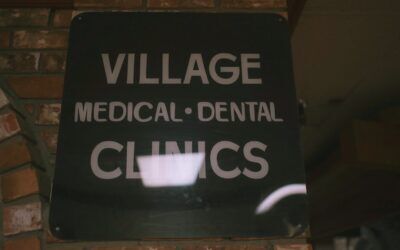Healthcare Providers: Mastering Digital Marketing Essentials
Digital Marketing Essentials for Healthcare Providers: Strategies to Boost Patient Acquisition and Online Visibility

Digital marketing for healthcare providers combines targeted online strategies to attract new patients, reinforce trust, and boost practice growth. Many medical practices face stiff competition and regulatory complexity, making it difficult to stand out in search results and social channels. This guide delivers actionable SEO tactics, content marketing frameworks, paid advertising blueprints, social media approaches, website UX principles, AI-driven innovations, niche-specific methods, and measurement best practices. Alongside these strategies, we highlight how Dapper Market Solutions LLC an AI-driven, Google-certified agency specializing in HIPAA-compliant healthcare marketing—can support your practice’s digital transformation.
Why Is Digital Marketing Crucial for Healthcare Providers in 2024?
Digital marketing unifies search visibility, patient engagement, and brand credibility by leveraging SEO, content, ads, and social proof. It reduces reliance on referrals, accelerates new patient acquisition, and ensures practices appear where patients research care options.
How Does Digital Marketing Improve Patient Acquisition and Engagement?
Digital marketing improves patient acquisition by ranking your practice for relevant queries and guides visitors through educational content into appointment bookings.
Key benefits include:
- Patient Reach Expansion – Broadens your audience through local SEO and paid search.
- Engagement Enhancement – Provides health resources that foster trust and encourage inquiries.
- Reputation Management – Collects and showcases reviews to influence patient decisions.
These tactics lay the groundwork for future outreach via email, chatbots, and telehealth.
What Are the Key Healthcare Marketing Trends for 2025?
Healthcare marketing in 2025 will center on:
- AI-Driven Personalization: Tailoring content and ads based on patient behavior.
- Voice Search Optimization: Structuring website content for conversational queries.
- Interactive Content: Using quizzes and calculators to qualify leads.
- Omnichannel Touchpoints: Integrating email, SMS, and social messaging for seamless experiences.
Embracing these innovations helps practices stay ahead of patient expectations and platform changes.
How Does HIPAA Compliance Impact Healthcare Digital Marketing?
HIPAA compliance ensures patient data privacy across all marketing channels, from email newsletters to CRM integrations. Adhering to secure messaging, encrypted data storage, and consent-based communications preserves trust and shields practices from regulatory penalties. This focus on privacy also reinforces brand integrity and encourages patients to share data willingly for personalized care.
This resource validates the importance of HIPAA compliance in healthcare digital marketing.
How Can Healthcare SEO Drive More Patients to Your Medical Practice?
Healthcare SEO optimizes website content, technical structure, and local presence to rank for patient-focused queries. By improving visibility on search engines, practices attract qualified traffic and convert visitors into appointments.
What Are the Best Local SEO Strategies for Medical Providers?
To dominate local results, practices should:
- Claim and optimize a Google Business Profile with accurate hours, services, and images.
- Build local citations on healthcare directories and chamber of commerce websites.
- Encourage 4- and 5-star patient reviews and respond promptly to feedback.
- Embed a location schema on service pages to reinforce geographic intent.
This research supports the article’s recommendations for local SEO tactics.
These tactics boost map pack rankings and drive foot-traffic.
How Does E-E-A-T Influence Healthcare SEO Success?
E-E-A-T (Experience, Expertise, Authoritativeness, Trustworthiness) elevates content credibility. Publishing authored articles by healthcare professionals, citing peer-reviewed sources, and highlighting certifications signals authority to search engines. Strong E-E-A-T mitigates YMYL (Your Money Your Life) scrutiny and improves ranking potential.
Which Keywords Should Healthcare Providers Target for Maximum Visibility?
Effective keyword targets include:
- Hyponymous queries like “local family physician near me.”
- Service-specific terms such as “urgent care telehealth appointment.”
- Condition-related searches (“arthritis treatment options”) tied to service pages.
- Long-tail questions (“how to prepare for colonoscopy”) in FAQ sections.
Combining local modifiers and patient-centric questions maximizes reach.
How to Optimize Technical SEO for Healthcare Websites?
A technical SEO audit should verify:
What Role Does Content Marketing Play in Healthcare Digital Strategies?
Content marketing educates patients, builds trust, and nurtures leads through articles, videos, and case studies. By solving patient pain points, practices demonstrate expertise and stay top-of-mind for future care decisions.
How to Create HIPAA-Compliant Patient Education Content?
Develop patient resources—blog posts, infographics, videos—without sharing identifiable health information. Use generic case examples, obtain consent for testimonials, and host quizzes on secure platforms to comply with privacy rules. This approach maintains trust while delivering valuable guidance.
Why Are Patient Testimonials and Case Studies Essential?
Patient testimonials humanize care experiences and illustrate real outcomes. Case studies communicate a practice’s process—from diagnosis to treatment—providing social proof that converts prospects. Featuring these stories on landing pages and social profiles reinforces credibility.
How Can Video Marketing Enhance Patient Engagement?
Video allows practices to:
- Demonstrate procedures and facility tours for transparency.
- Share expert interviews to build rapport.
- Offer live Q&A sessions to answer patient questions in real time.
Integrating videos on homepages and social channels boosts dwell time and reinforces authority.
What Types of Blog Content Attract Healthcare Patients?
Patient-focused blog topics include:
- “5 Tips to Manage High Blood Pressure”
- “Telehealth vs. In-Office Visits: Which Is Right for You?”
- “Preparing for Your First Pediatric Checkup”
- “Understanding Botox Treatments for Med Spas”
These articles address common concerns and guide readers toward booking an appointment.
How Does Paid Advertising (PPC) Support Healthcare Marketing Goals?
Paid advertising accelerates patient acquisition, targeting specific demographics, conditions, and local areas. By combining search, display, and social ads, practices capture high-intent prospects and re-engage site visitors.
What Are Effective Google Ads Strategies for Medical Clinics?
Success with Google Ads relies on:
- Structured campaign hierarchy by service line (e.g., “Dermatology Treatments,” “Family Medicine”).
- Geotargeting to limit spend to service areas.
- Ad extensions (call buttons, location snippets) for immediate conversions.
- Negative keyword lists to filter out irrelevant traffic.
This precision maximizes budget efficiency and ROI.
How to Use Social Media Advertising for Healthcare Providers?
On platforms like Facebook and Instagram, practices can:
- Promote patient education posts to lookalike audiences.
- Run appointment reminder ad campaigns segmented by age or condition.
- Use lead-generation forms to capture contact information within the platform.
This approach nurtures community engagement and drives appointment requests.
What Are Best Practices for Retargeting Healthcare Prospects?
Effective retargeting involves:
- Segmenting site visitors by pages viewed (service, pricing, contact).
- Serving dynamic ads that highlight relevant services or offers.
- Sequencing messaging from awareness to appointment scheduling.
- Limiting frequency to avoid ad fatigue.
Well-timed retargeting recovers indecisive prospects and boosts conversions.
How Does Display Advertising Help Patient Acquisition?
Display ads build brand awareness among audiences browsing health-related content. Using medical-specific placements, these banners familiarize potential patients with your practice before they search, creating top-of-mind recall for future needs.
How Can Social Media Marketing Build Patient Trust and Online Reputation?
Social media marketing fosters two-way communication, showcases care culture, and amplifies patient satisfaction. By consistently sharing helpful content and responding to feedback, practices reinforce transparency and credibility.
What Platforms Are Best for Healthcare Providers?
Healthcare providers thrive on:
- Facebook for community groups and event promotion.
- Instagram for facility tours and patient testimonials.
- LinkedIn for professional networking and thought leadership.
Selecting channels aligned with patient demographics optimizes engagement.
How to Manage Online Reputation for Medical Practices?
Reputation management requires:
- Monitoring review platforms (Google, Yelp, Healthgrades).
- Responding promptly and professionally to all feedback.
- Encouraging satisfied patients to share experiences.
- Addressing negative reviews privately with HIPAA-safe messaging.
Proactive reputation work builds trust and drives referrals.
How to Increase Patient Engagement Through Social Media?
Encourage interaction by:
- Posting polls on health topics to gather opinions.
- Hosting live Q&A sessions with physicians.
- Sharing behind-the-scenes clinic stories.
- Promoting user-generated content with consent.
These activities deepen community bonds and signal authenticity.
What Are the Essentials of Healthcare Website Design and User Experience?
A high-performing healthcare website prioritizes clear navigation, emotional design, and conversion pathways that respect patient privacy and accessibility standards.
Why Is Mobile-Friendly Design Critical for Healthcare Websites?
With over 60 percent of patients researching care on smartphones, responsive design ensures legible text, accessible scheduling forms, and click-to-call buttons. Mobile optimization directly influences appointment completion rates and search rankings.
How to Integrate Patient Portals for Better Service?
Embedding secure patient portals allows users to view test results, message providers, and schedule visits online. Streamlining these functions reduces administrative burdens and enhances patient satisfaction by offering 24/7 access to care tools.
What Are Best Practices for Conversion Rate Optimization (CRO) in Healthcare?
CRO tactics include:
How Are AI and Advanced Technologies Transforming Healthcare Digital Marketing?
AI and machine learning personalize outreach, automate workflows, and surface predictive insights to optimize marketing investments in real time.
How Does AI Personalization Improve Patient Targeting?
AI analyzes patient search patterns, demographics, and engagement history to deliver tailored content and ads. This hyper-relevance increases click-through rates and appointment bookings by matching messaging to individual needs.
What Is Predictive Analytics for Healthcare Lead Generation?
Predictive analytics uses historical patient data and behavior signals to forecast high-value prospects. By focusing marketing efforts on audiences with the highest conversion likelihood, practices maximize lead quality and reduce acquisition costs.
How Can AI Enhance Content and Campaign Optimization?
AI-powered tools generate topic ideas based on real-time search trends, automate A/B testing for ads, and provide sentiment analysis on patient feedback. These efficiencies accelerate decision-making and continuously refine marketing performance.
What Specialized Digital Marketing Strategies Work for Healthcare Niches?
Niche practices benefit from tailored tactics that address unique patient motivations, regulatory nuances, and competitive landscapes.
How to Market Med Spas to Attract Aesthetic Patients?
Med spa marketing should combine before-and-after galleries, Instagram influencer collaborations, and location-specific Google Ads. Offering virtual consultations via social channels reduces barriers for cosmetic inquiries.
What Are Effective Digital Marketing Approaches for Senior Living Communities?
Senior living digital strategies include educational webinars on care options, targeted Facebook ads to adult children of seniors, and SEO-optimized guides on assisted living amenities. Clear, empathetic messaging and virtual tours foster trust.
How to Tailor Marketing for Dental Practices and Urgent Care Centers?
Dental practices thrive on appointment-reminder SMS campaigns and local SEO for “same-day dental emergencies.” Urgent care centers benefit from geofenced display ads and PPC keywords for “walk-in clinic near me,” ensuring high-intent visibility.
What Are the Best Practices for Measuring and Monitoring Healthcare Marketing Success?
Accurate measurement identifies what drives patient acquisition and informs budget allocations for maximum ROI.
Which KPIs Should Healthcare Providers Track?
Essential KPIs include:
- Organic traffic and ranking improvements for target keywords.
- New patient leads generated via SEO, PPC, and social ads.
- Conversion rates for appointment requests and form submissions.
- Patient acquisition cost across channels.
- Engagement metrics (time on page, social interactions).
Tracking these indicators aligns marketing efforts with business goals.
How to Use Google Analytics and Search Console for Healthcare SEO?
In Google Analytics, monitor behavior flow, goal completions, and channel performance. In Search Console, review query reports, index coverage, and rich results eligibility. These tools reveal optimization paths and validate schema implementations.
Why Is Regular Content Auditing Important for Healthcare Marketing?
Content auditing uncovers outdated articles, broken links, and evolving patient queries. Refreshing statistics, updating clinical guidelines, and improving readability maintains E-E-A-T and preserves search visibility over time.
Digital marketing mastery empowers healthcare providers to expand reach, strengthen patient relationships, and optimize marketing investment. By applying SEO, content, paid ads, social media, UX design, AI, niche tactics, and measurement frameworks, practices can achieve sustainable growth and improved patient outcomes. Partnering with a specialist like Dapper Market Solutions LLC ensures customized, HIPAA-compliant strategies that drive measurable ROI and long-term authority.
Frequently Asked Questions
What are the benefits of using social media for healthcare marketing?
Social media offers numerous advantages for healthcare marketing, including enhanced patient engagement, increased brand awareness, and improved communication. By sharing informative content, healthcare providers can educate patients about services and health topics, fostering trust and loyalty. Additionally, social media platforms allow for real-time interaction, enabling practices to respond to patient inquiries and feedback promptly. This two-way communication helps build a community around the practice, ultimately leading to higher patient retention and acquisition rates.
How can healthcare providers measure the effectiveness of their digital marketing efforts?
Healthcare providers can measure the effectiveness of their digital marketing through various key performance indicators (KPIs). Important metrics include website traffic, conversion rates, patient acquisition costs, and engagement levels on social media. Tools like Google Analytics and social media insights can provide valuable data on user behavior and campaign performance. Regularly analyzing these metrics allows practices to adjust their strategies, optimize their marketing efforts, and ensure they are meeting their patient acquisition and engagement goals effectively.
What role does content marketing play in patient education?
Content marketing is crucial for patient education as it provides valuable information that addresses common health concerns and questions. By creating informative blog posts, videos, and infographics, healthcare providers can help patients understand their conditions, treatment options, and preventive measures. This educational approach not only empowers patients but also positions the practice as a trusted authority in the field. Engaging content can lead to increased patient inquiries and appointments, as patients are more likely to seek care from providers who demonstrate expertise and care through their content.
How can healthcare providers ensure their digital marketing is HIPAA compliant?
To ensure HIPAA compliance in digital marketing, healthcare providers must prioritize patient privacy and data security. This includes avoiding the sharing of identifiable health information in marketing materials and obtaining consent for any patient testimonials or case studies. Additionally, using secure platforms for communication and ensuring that all digital marketing tools comply with HIPAA regulations is essential. Regular training for staff on HIPAA guidelines and best practices can further reinforce a culture of compliance within the organization.
What are the best practices for creating engaging video content in healthcare marketing?
Creating engaging video content in healthcare marketing involves several best practices. First, focus on clear messaging that addresses patient concerns or questions. Use storytelling techniques to make the content relatable and memorable. Incorporating visuals, such as animations or patient testimonials, can enhance engagement. Additionally, ensure that videos are optimized for mobile viewing and include calls to action, encouraging viewers to book appointments or learn more. Regularly sharing video content on social media and the practice’s website can also help reach a wider audience.
How can healthcare providers leverage patient reviews in their marketing strategy?
Healthcare providers can leverage patient reviews as a powerful marketing tool by showcasing positive feedback on their websites and social media platforms. Highlighting testimonials can build trust and credibility, influencing potential patients’ decisions. Encouraging satisfied patients to leave reviews on platforms like Google and Yelp can enhance online visibility and improve search rankings. Additionally, responding to reviews—both positive and negative—demonstrates a commitment to patient satisfaction and can foster a positive reputation in the community.
Conclusion
Implementing effective digital marketing strategies is essential for healthcare providers to enhance patient acquisition and engagement. By leveraging SEO, content marketing, and social media, practices can build trust, improve visibility, and foster lasting relationships with patients. Partnering with experts like Dapper Market Solutions LLC ensures that your marketing efforts are HIPAA-compliant and tailored to your unique needs. Start transforming your practice’s digital presence today by exploring our comprehensive services.


